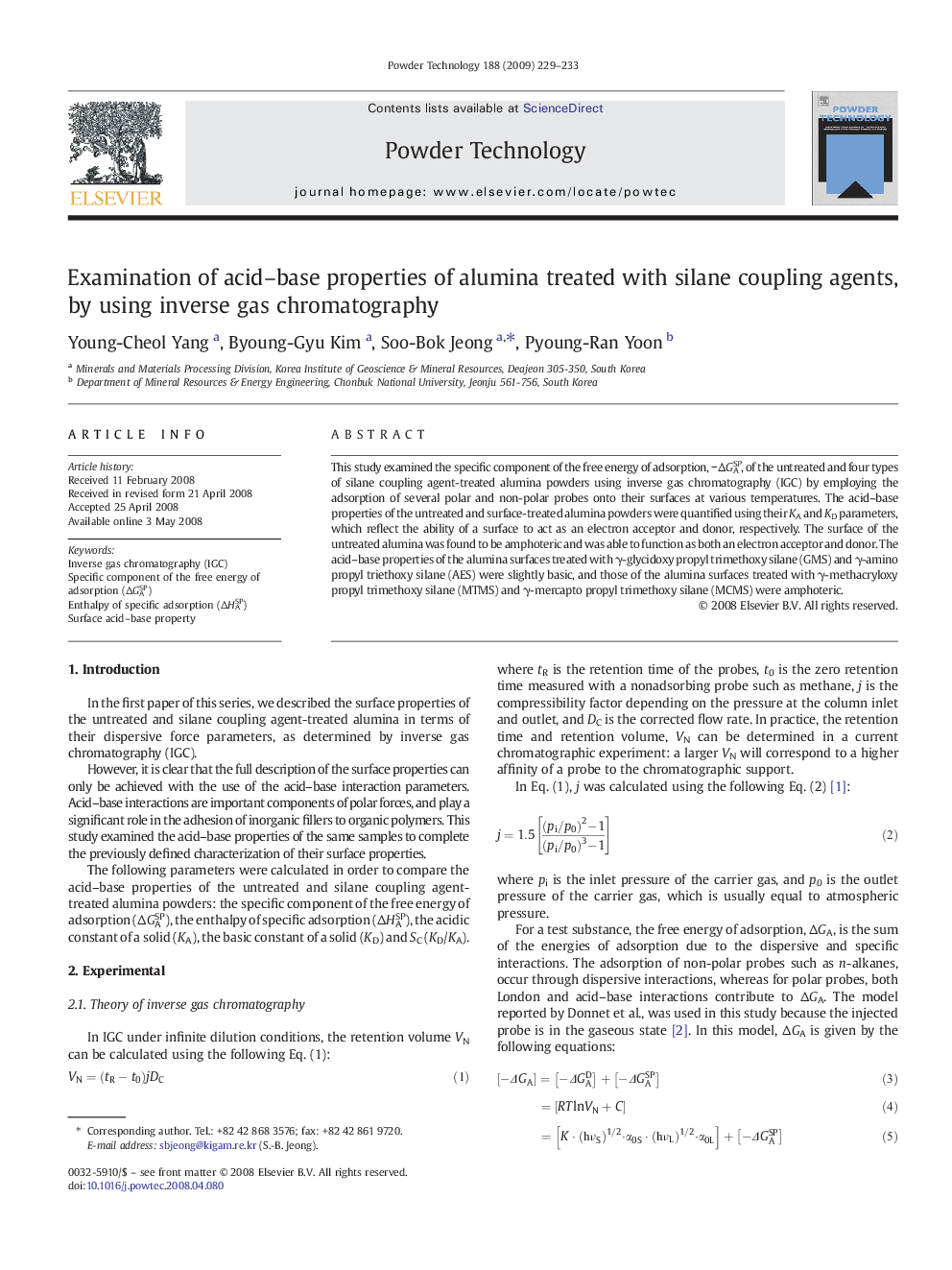| Article ID | Journal | Published Year | Pages | File Type |
|---|---|---|---|---|
| 238673 | Powder Technology | 2009 | 5 Pages |
This study examined the specific component of the free energy of adsorption, − ΔGASP, of the untreated and four types of silane coupling agent-treated alumina powders using inverse gas chromatography (IGC) by employing the adsorption of several polar and non-polar probes onto their surfaces at various temperatures. The acid–base properties of the untreated and surface-treated alumina powders were quantified using their KA and KD parameters, which reflect the ability of a surface to act as an electron acceptor and donor, respectively. The surface of the untreated alumina was found to be amphoteric and was able to function as both an electron acceptor and donor. The acid–base properties of the alumina surfaces treated with γ-glycidoxy propyl trimethoxy silane (GMS) and γ-amino propyl triethoxy silane (AES) were slightly basic, and those of the alumina surfaces treated with γ-methacryloxy propyl trimethoxy silane (MTMS) and γ-mercapto propyl trimethoxy silane (MCMS) were amphoteric.
Graphical abstractThe first figure shows the change in [RTlnVN] vs. [(hνL)1/2·α0L] for each probe used to evaluate the − ΔGASP of the untreated alumina. The vertical distance between the n-alkane plot and the [RTlnVN] value for the polar probe corresponds to the − ΔGASP value. The second figure shows the change in [− ΔGASP/T] as a function of the reciprocal absolute temperature. − ΔHASP is the slope of the line.Figure optionsDownload full-size imageDownload as PowerPoint slide
